The tale of how a Catalan brother and sister performance analysis team came to be working at Aberdeen was always likely to be full of twists and turns.
In mid-July, the Dons revealed Jordi Rams, 29, had joined the club as head of performance analysis, while sister Marta, 31, would be working as an analyst with the first team.
The Reds’ press release mentioned the Barcelona-raised siblings had arrived from European group stage regulars FC Midtjylland, of Denmark, while Jordi had also previously spent time in the United States as part of the FC Barcelona Academies youth programme.
However, the Rams’ back story has a lot more to it.
It’s a tale of two sports – football and basketball – with the siblings spending five years on opposite sides of the Atlantic during their education in performance analysis, before joining forces to work together at Champions and Europa League group stage level and, finally, moving on to Aberdeen with a little help from Aston Villa set-piece coach Austin MacPhee.
Sitting down with The Press And Journal at Aberdeen’s Cormack Park training ground two months after the news of their appointment, Jordi and Marta sketched out the unconventional path which led them to Jim Goodwin’s Dons.
From Barcelona to the Granite City
Jordi said: “I think it’s quite interesting, because we mixed two sports, and it’s thanks to those two sports we are here, more or less.
“In my case it was football – I tried to play more seriously, but to have more fun I decided to play with my friends.
“At this point is when I started coaching and being interested in that world. I took my higher education and also my Uefa A licence, then after that, I was involved in local clubs in our area.
“I went to a bigger club in Barcelona, UE Cornella, where I had the opportunity to face big teams in our area like Barca, Espanyol, Girona – big clubs – and then I had the opportunity to go to the United States with Barca Academies as a coach.”
2015 – the year Jordi landed his overseas coaching role with Barca’s American youth programme – was also the year the siblings discovered performance analysis.
They were exposed to the software they have since become masters of: video analysis programme, Hudl Sportscode.
Switching focus to performance analysis
In the years which followed, while Jordi was in America, coaching with Barca Academies, but also learning performance analysis on the job with Charlotte Independence and San Antonio FC, the elder Marta was also honing her craft – in a different sport entirely with FC Barcelona’s women’s basketball teams.
Marta explained: “I came from basketball, not football.
“I played basketball since I was eight years old until 18 or 20. I started coaching around 16 or something like this.
“In 2015, we met Xavi Guila and Lluis Casas, and they showed us what analysis was and this programme, Hudl Sportscode, and since then I was focused in analysis.
“My first job as an analyst was with FC Barcelona in women’s (basketball). The first two years I was with the academy with some teams and then the last two years I was with the first team.”
Marta would then spend a couple more years working with a local basketball club in Badalona – on the outskirts of the Catalan capital – before finally moving into football and teaming up with Jordi at FC Midtjylland during Covid in 2020.
She insists the transition between analysing performance in basketball to analysing it in football was an “easy” one, due to both sports being formation-based team games where set-pieces can be all-important.
Plus, growing up where the Rams did, football is ubiquitous.
Working at Champions League level
It was Jordi who found the opportunity to join FC Midtjylland, with the younger Rams sibling returning to Europe and arriving in Denmark for the 2020/21 season, while Marta, meanwhile, initially did the job from Spain.
The first season with Midtjylland was one in which the Danish Superliga champions contested a Champions League group with Ajax, Atalanta and Liverpool.
Although they finished bottom of the pool, they ended the campaign with a 1-1 draw in Italy with Atalanta, before a 1-1 draw with Jurgen Klopp’s English Premier League Reds in Denmark.
We’re here to try to help clubs reach objectives…”
Jordi insists performance analysis work at European elite level comes with the same objectives as they are now trying to meet at Aberdeen.
He said: “It’s more or less what we’re trying to do here – identifying strengths, weaknesses and trying to find new opportunities to punish them and things to adjust to out of possession, for example.
“But against these teams you have to adapt a lot and I think we did a good job.
“We drew against Liverpool in our last game.”
These valuable experiences of top European football competition continued to come for Marta and Jordi in their second year at Midtjylland, with the pair working side-by-side in football in the physical sense for the first time.
Jordi said: “The next season we had the opportunity for both of us to be there in Denmark, with very good experiences in the Europa League and in one round of the Conference (League).
“In the qualifying rounds (for the Champions League), we played Celtic, PSV…
“PSV was a very, very strong team, and It was very difficult, but it allowed us to compete in the Europa League – against Braga from Portugal and Red Star in Belgrade – which was a great experience.
“We’re here to try to help the club reach these objectives and these experiences.”
MacPhee-Goodwin link
A well-known Scottish football face – or, perhaps, haircut – had a hand in the Rams’ move from Denmark to Aberdeen during the summer.
Jordi had already noticed and applied for the head of performance analysis vacancy left by Greig Thomson at Pittodrie when he asked then-Midtjylland assistant coach Austin MacPhee – who has also served as assistant with Scotland, Northern Ireland, Hearts and, crucially, St Mirren – if he could put a word in with the Dons.
Detailing the chain of events, Jordi said: “It was one of my best friends, Jose Rodriguez – he is also at Aston Villa with Austin because we met each other in Midtjylland.
“He told me: ‘Hey have you seen this opportunity?’
“(And I said:) ‘Yes, I applied a few weeks ago, but how does it work? I didn’t get a reply or a response.’
“He told me: ‘Tell Austin, maybe he knows someone at the club.’
“I asked Austin and he said: ‘OK, let me check’.
“A few weeks before, the club had signed Jim Goodwin and they were pretty good friends – they knew each other in St Mirren I think, where Austin was part of the staff.
“At that moment it moved faster. I had the first meeting with Steven Gunn (Aberdeen’s director of football) and Emma Flett (football operations co-ordinator), then very quick with Jim.
“I think we connected, and also, when they met Marta, they saw the value of adding our profiles.
“It’s all about being efficient and trying to provide as much information as they need, as fast as possible.
“I showed them what we do. Then together with Marta we showed them, and I think they liked it and that’s why we’re here.”
A week in the life of Aberdeen’s performance analysts
So what do Aberdeen’s performance analysts… do?
Well, a large part of their role is “coding” hours and hours of match footage – this means breaking upcoming Premiership opponents’ performances down into clips showing all of the elements of their tactical approach, as a team and individually, and laying bare their strengths and weaknesses.
Having a “very detailed” understanding of what your rivals are going to do – and what you could do to exploit and/or combat it – come each Saturday is the aim.
Explaining how performance analysis can feed into a team’s tactics in the modern game, Jordi explained: “We need to know if the counter attacks are from the left side, right side, if they cross the ball, if they go through the central channel, if they play short but very quick, or if they play long.
“We code all these things so we know exactly how they counter attack if they counter attack.
“At the end we might decide to cover right side because we identify they do the counter attacks in the left channel, it’s very easy for us to go and find the clips to show them to the players.
“It’s a balance – we spend a lot of time coding, but then selecting clips and organising the meetings is very quick.”
From Goodwin to players: What Jordi and Marta prepare ahead of play
The dossiers Jordi and Marta prepare on upcoming opponents, sent to boss Jim Goodwin and his staff, and explained to management and players in meetings, have to be spot on.
They make tactical assessments of opponents and, as such, can have a heavy bearing on what is worked on in training by the management team and players during the week to prepare for the game in question.
Outlining how their analysis plays into the week at Cormack Park, Jordi said: “Very early in the morning on Monday, they (the coaching staff) can see everything – the reports – more or less the first image of the opponents we’re going to face on Saturday.
“We have different meetings of staff regarding the week and how the players are and all these things, then the same afternoon or the next day (Tuesday) is when we sit and take a look at the clips we thought would be interesting.
Marta writes individual stuff for the players – clips from opponents who they are maybe going to compete with 1v1, just for them to get an idea of what they are going to do.”
“And, from there, we prepare the next days – the week is already planned, but when they have all this information is when we close (in) that ‘we’re going to do this, this, this’ or ‘we’re going to follow this plan’.
“When we’re finished with all this is when we start preparing the meetings for the players.
“It’s not all the clips we show them, just one or two of each important aspect to consider. Marta, especially, writes all the individual stuff for the players – clips from opponents who they are maybe going to compete with 1v1, just for them to get an idea of what they are going to do.
“We’ve got quite a new squad of players and they don’t know the (opposition) players in the league, so I think it helps and they are happy with all this kind of information.
“With the goalkeepers, we do some individual stuff for goalkeeping coach Craig Samson.”
What happens during games?
The Rams also carry out their vital role live on matchdays, helping Goodwin, the staff and the players gain advantages – or overcome disadvantages – during play.
Jordi added: “On game-day we do live analysis – the most important thing during the games is to provide constant feedback to the staff.
“Again – it’s not that we are constantly talking to them, because they are in their roles and have to control a lot of things.
“But when we see something or send them the image, they have an iPad so they can check every moment that they want.
We are here to support the players. They play the game.”
“If they see something, they ask and we tell them what we think or what we have.
“Also, at half-time we provide feedback – sometimes just for the staff, and sometimes for the staff and players we’ll show this moment or this clip.
“We are here to support the players. They play the game. We don’t play the game, the staff don’t play the game. They take decisions and our role is to help them take good decisions.”
What would be a frequent example of things the analysts might spot during the 90 minutes which leads to a change in how the Dons are approaching the game?
“Spaces they are occupying and we are maybe not occupying well,” Jordi said.
“(Before the game) we analyse the opponent, they analyse our team, and maybe they change something we don’t expect.
“We try with our analysis to get as much information as we can to avoid these kinds of things, which is why we ‘code’ many games from the opponents to identify their patterns.
“But, during the game, everything can change and anything can happen, so we have to be ready.”
‘Dangerous actions’ and ‘deliveries’ are what make a good performance
Some football fans have no interest in stats, but those who do may be interested to learn professional performance analysts like Jordi and Marta don’t put too much stock in metrics like expected goals (xG), which are commonly written and talked about in the media.
Expected goals is used by several stats companies to work out how many goals a team should have scored in game, by assigning a value to each of their chances. Expected goals against (xGA) works in a similar way.
But Marta explains why the Spanish siblings have their own measures for judging an Aberdeen performance – or the threats of an upcoming Premiership opponent.
She said: “What we’ve found is that in one platform, we have one value for the expected goals, and in another platform, for the same match, we have another (value).
“So we always to use data that is objective and our own data.
“What we do is we create our own data with our own terminology and we understand it and we know how to read it and explain to Jim or the players or Steven (Gunn), for example.”
The “most important” metrics, according to Jordi and Marta, in assessing team performance, and as a result the most important measure to Goodwin, his staff and the players, are “dangerous actions” and “deliveries.”
What do these terms mean?
Although the names of these metrics give you a rough idea of what it is Aberdeen are looking for in their performances, exact definitions of terms are a bit like asking KFC to lay out their 11 herbs and spices.
Marta said: “We know exactly what that means, so can explain ‘we are good in deliveries’, ‘we are bad’, ‘we have to improve’, ‘we have to maintain’.”
Jordi added: “Right now you are probably thinking: ‘ok, what’s a dangerous action, what’s a delivery?’
“That is something only we know here in Aberdeen. The opponent doesn’t know how to count them or how we count them.”
Siblings aiming to cover all of Aberdeen’s teams
One thing the Rams are quite happy to discuss is their aim – one they consider vital – to soon have performance analysis of all of Aberdeen’s teams, including the women’s side, as well as capacity to help the club’s transfer committee assess transfer targets.
The first-team and under-18s, via analyst Reece Jones, are already covered – helping Goodwin and his staff assess when young players are ready to step up to senior level.
“In order to also add value to the club, it needs to work constantly and following the same structure – it can’t be that the U18s (footage) is coded one way or they provide analysis differently from the first team,” Jordi explained.
“They need to be aligned to compare players.
“We can – thanks to our own data – compare Jonny Hayes with another U18 player, for example, to see if the U18 player is better than Jonny Hayes.”
Fitting then, a story of twists and turns, should end with a reference to a player who has built his Aberdeen career on them.
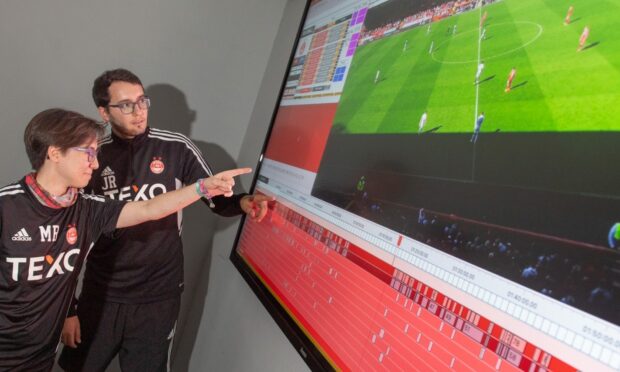
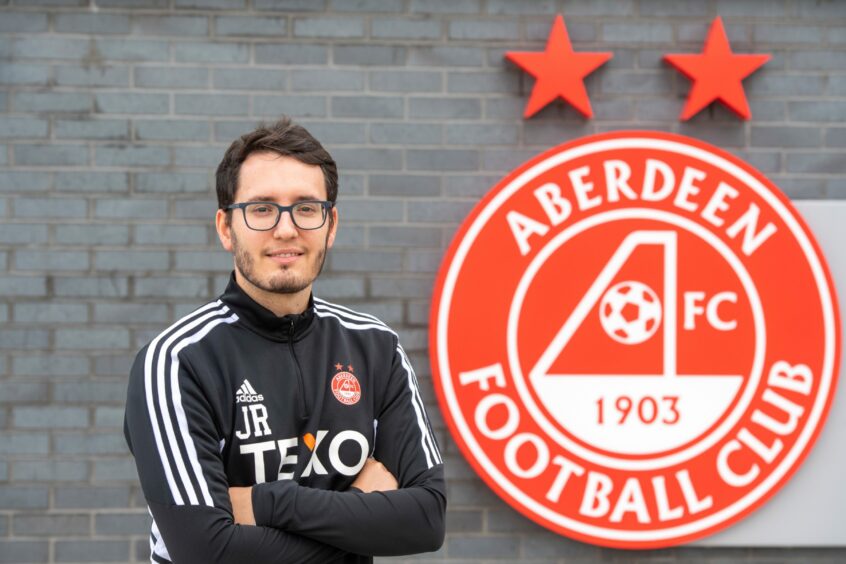
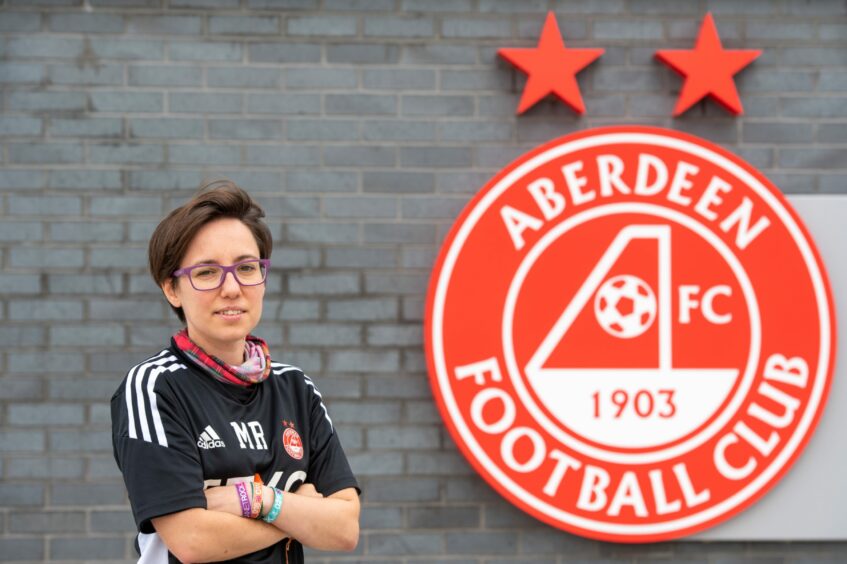
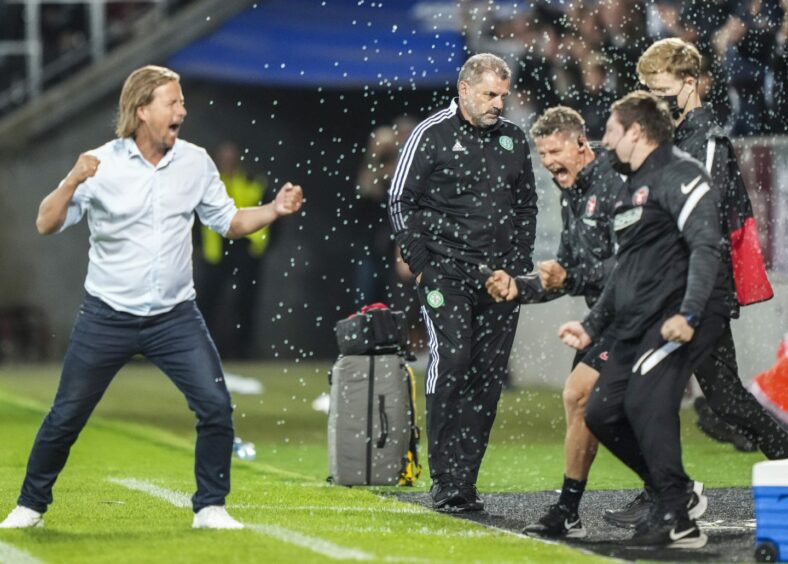
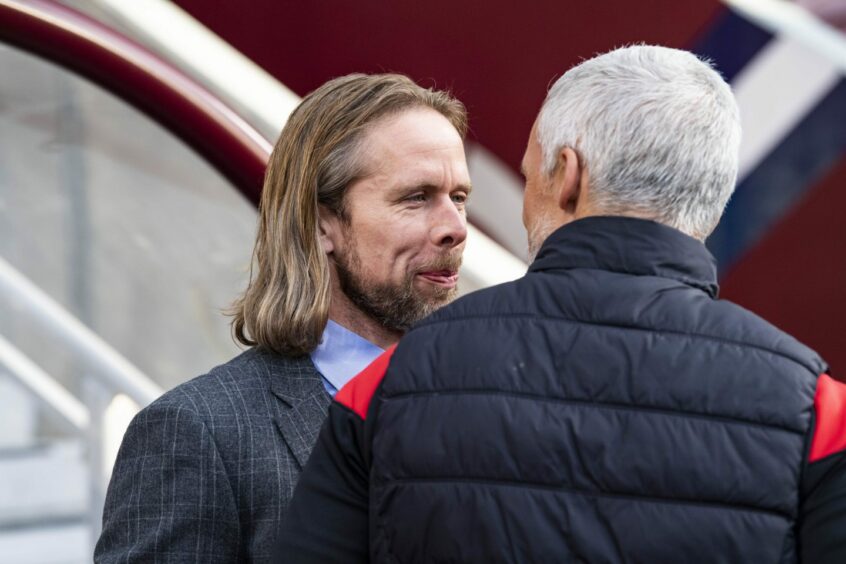
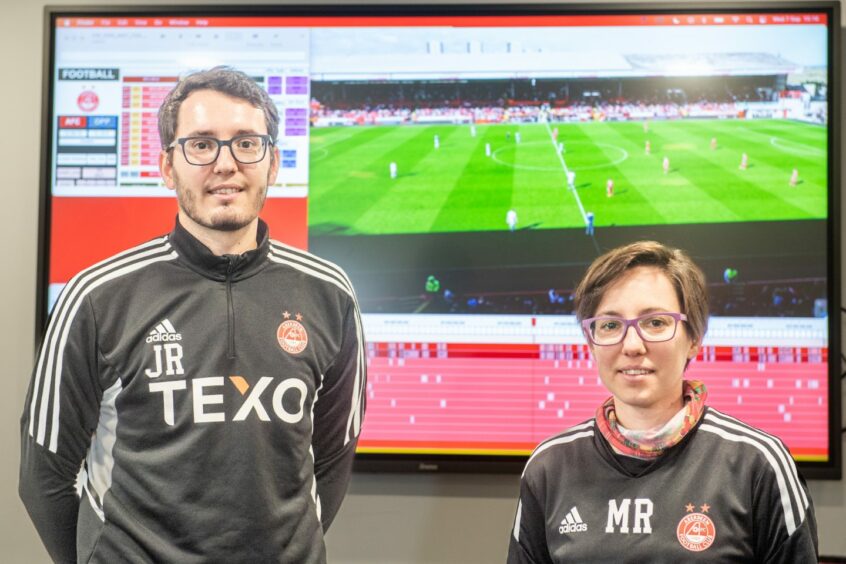
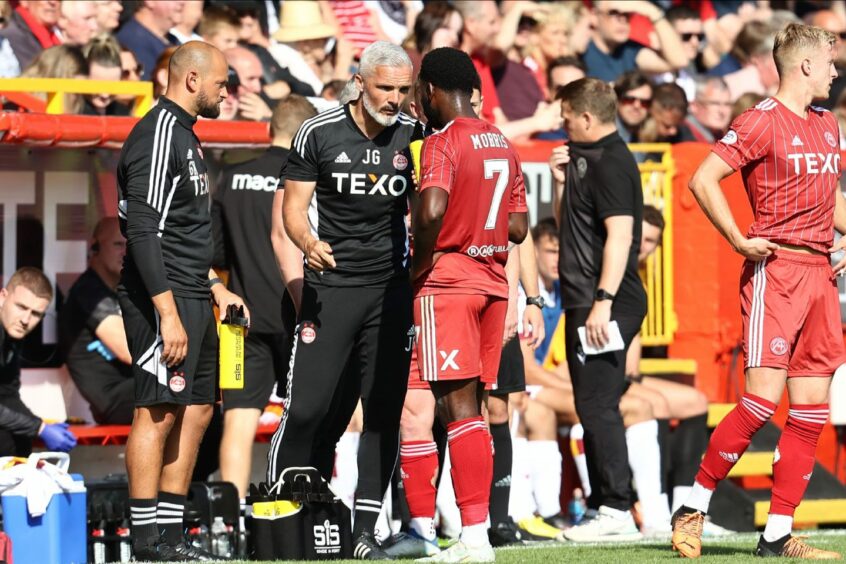


Conversation